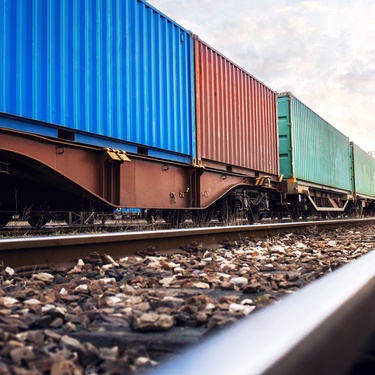
Freight transportation sustains the global economy, but it faces challenges that can disrupt operations and increase costs. Whether you're moving goods locally or internationally, addressing these vulnerabilities can greatly improve operational success.
Understanding these common weak points in freight transportation is essential for businesses relying on shipping to avoid inefficiencies and safeguard their supply chains.
1. Limited Infrastructure
Aging or underdeveloped infrastructure remains a bottleneck in freight transportation. Highways plagued with potholes, congested ports, or outdated rail systems can delay deliveries and increase costs.
Freight companies are often limited to specific routes, leading to inefficiencies, particularly when hauling large quantities of goods. Choose transportation providers that utilize advanced logistics technology and navigation infrastructure. This guarantees your shipments travel smoothly, even with route restrictions.
2. Regulatory Hurdles
Freight transportation is heavily regulated to promote safety and environmental sustainability. However, inconsistent regulations across states or countries can be difficult to manage. For example, differing customs policies or truck-weight limits can cause delays and penalties.
What you can do: Work with logistics providers that specialize in regulatory compliance or consult third-party customs brokers to avoid unnecessary headaches.
3. Labor Shortages
Driver shortages have persisted in the freight industry for years, as fewer workers pursue trucking careers due to high demands and long hours. This issue worsens delivery delays, forcing businesses to compete for limited transport staff. To mitigate this, diversify transportation options by combining rail and sea freight with trucking. Partnering on multimodal freight solutions can reduce disruptions.
4. Cargo Theft
Cargo theft is increasing worldwide, with thieves targeting valuable shipments at rest stops, distribution centers, and ports. Insufficient supply chain security makes transport companies vulnerable, leading to significant financial losses and damage to their reputation. Security seals are crucial for cargo safety, providing an affordable and highly effective way to prevent theft. For added protection, combine seals with GPS tracking.
5. Fuel Costs and Price Volatility
Fuel prices directly impact freight costs, and their volatility makes it difficult for shippers to budget effectively. Rising prices increase operating costs significantly, leading to surcharges that are passed down to customers. Look for freight providers that employ fuel-efficient fleets or incorporate sustainability measures. These providers offer some immunity from aggressive fuel price surges.
6. Technological Shortcomings
While the supply chain is becoming increasingly tech-driven, some carriers lag in adopting essential tools like automated tracking systems or route optimization software. A lack of technology restricts real-time updates and makes handling disruptions more complicated. Prioritize working with freight services that offer comprehensive insights, automated tracking, and AI-powered logistics solutions to handle real-time issues proactively.
Knowing typical weak points in freight transportation helps businesses plan better and safeguard their operations from expensive disruptions. Tackling these issues not only minimizes risks but also enhances supply chain resilience in a growingly unpredictable global market.
Bio: Casey is a passionate copyeditor highly motivated to provide compelling SEO content in the digital marketing space. Her expertise includes a vast range of industries from highly technical, consumer, and lifestyle-based, with an emphasis on attention to detail and readability.




















